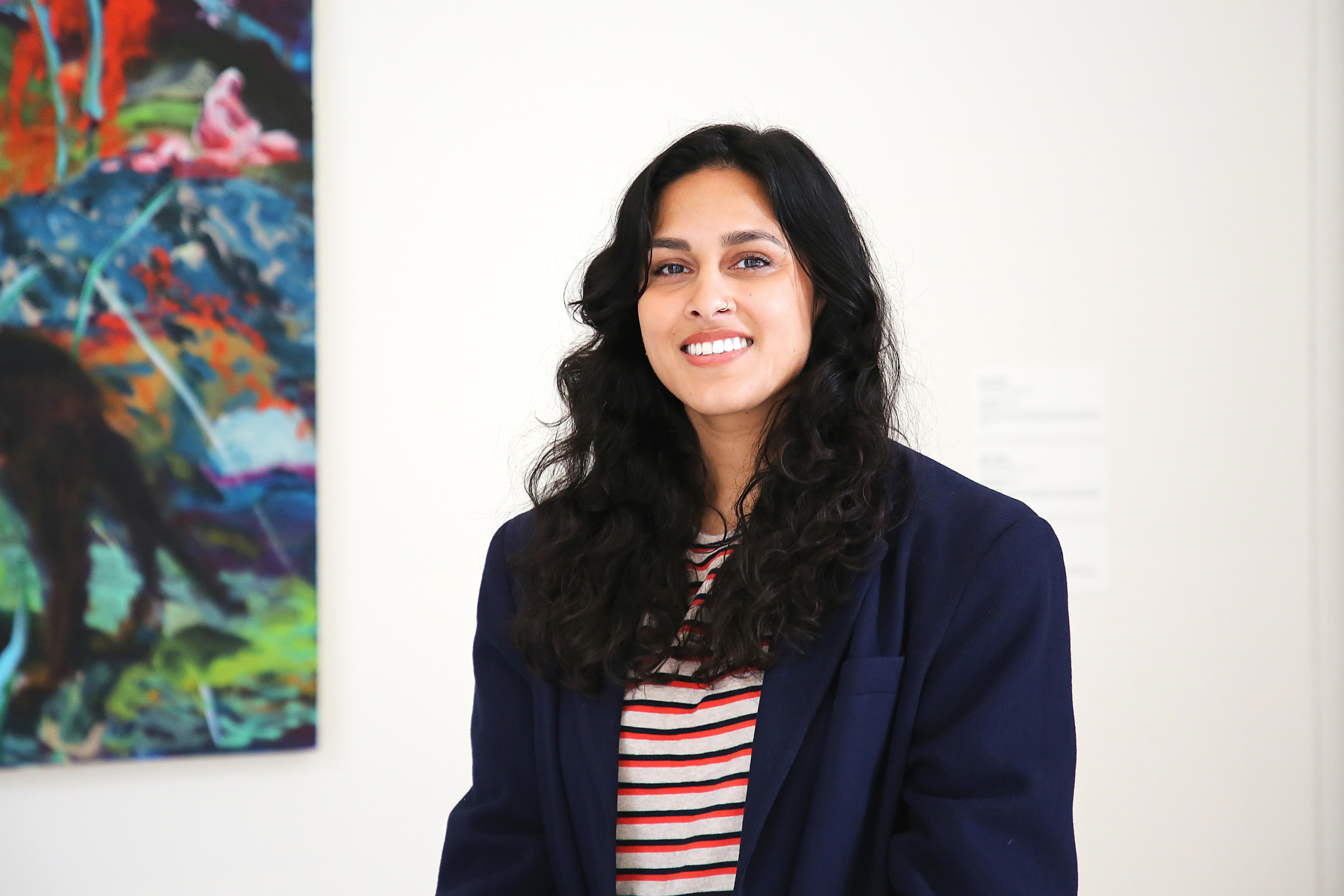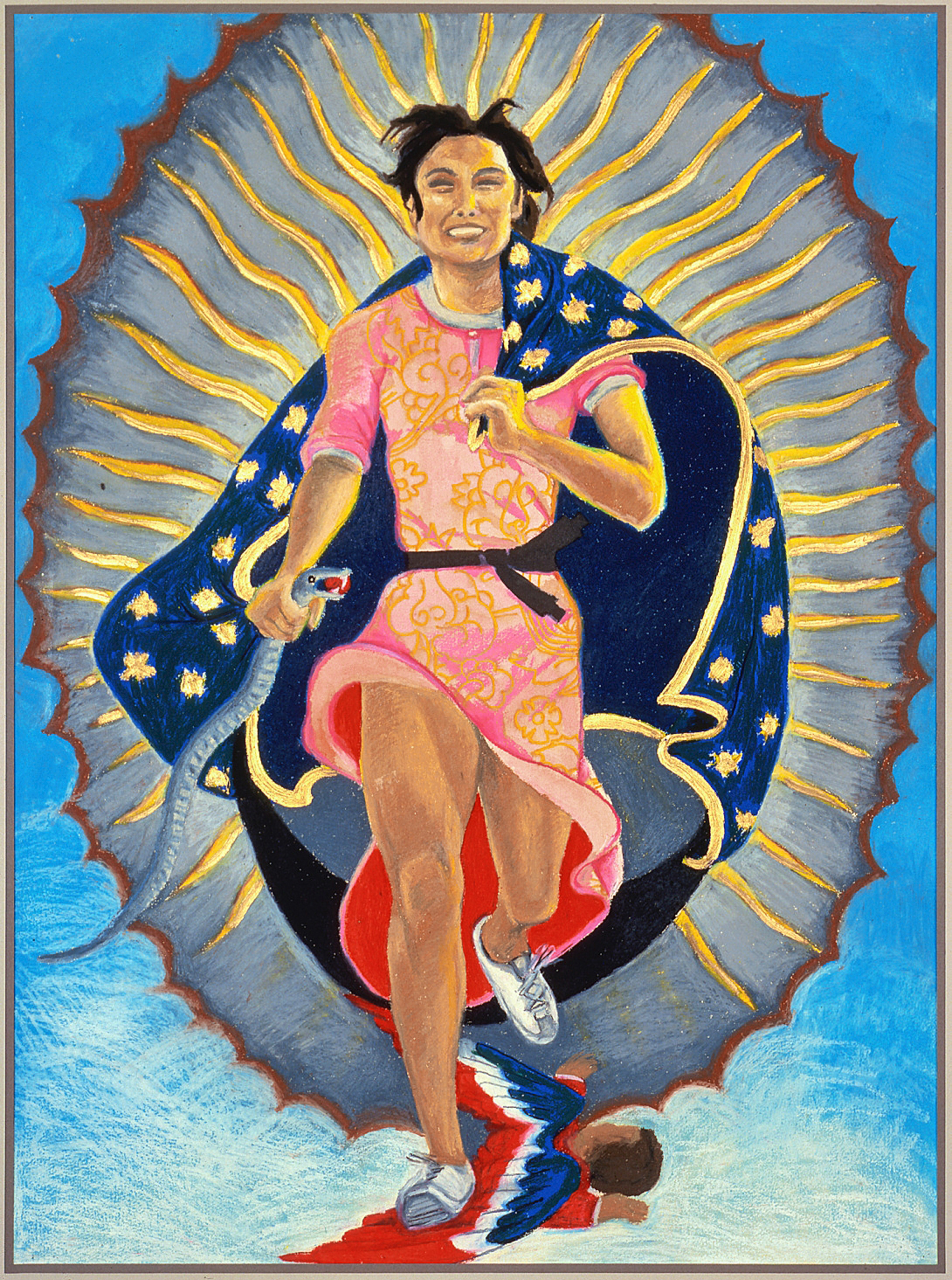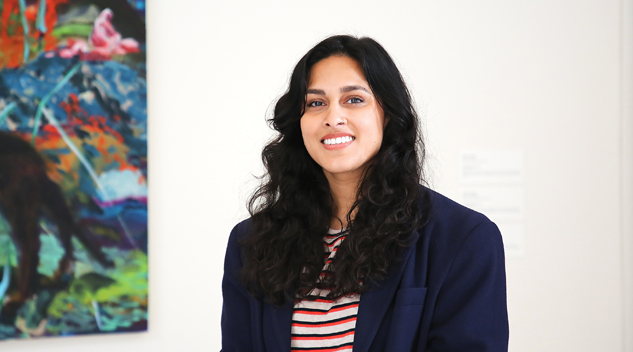#Nidhi #Gandhi #Antiques #Arts #Weekly

Nidhi Gandhi, curatorial and programs associate at San José Museum of Art. Photo: Frederick Liang.
A traveling exhibition organized by the Museum of Contemporary Art in San Diego, Calif., that will be on view at the San José Museum of Art (SJMA) through October 29, explores the work of artist and activist Yolanda López (1942-2021). The artist was largely unfamiliar to the editorial team at Antiques and The Arts Weekly so we reached out to the exhibition’s point-person at the SJMA, Nidhi Gandhi, who is also SJMA’s curatorial and programs associate, for some backstory on the artist, what her relevance is, and why the exhibition is a homecoming of sorts.
Tell me a little bit about why readers should know about Yolanda López? How is she significant in the art history canon?
Actually, Yolanda López has not received the recognition she should, which is one of the reasons we felt it was crucial to bring this exhibition to the San José Museum of Art. López was an artist, activist and educator with a pathbreaking career in California that spanned five decades. She played a significant role in the San Francisco Bay Area as educational director for the Mission District Cultural Center and as an instructor at University of California, Berkeley, Mills College, California College of the Arts, Stanford University and more. López was also a recipient of the National Women’s Caucus for Art Lifetime Achievement Award in 2008, and a Latinx Artist Fellowship from the Andrew Mellon Foundation in 2021. So, it’s somewhat shocking that “Yolanda López: Portrait of the Artist” is her first ever solo exhibition at a museum.
However, many people might recognize some of the images she created before they recognize her name. Her best-known work, “Portrait of the Artist as the Virgin of Guadalupe” (1978), is one of the most iconic artworks to emerge from the Chicano Movement. In the painting, she depicts herself wearing running shoes and the Virgin Mary’s star-patterned mantle to challenge the colonial and patriarchal origins of the Guadalupe iconography, transforming the symbol into one of radical feminist optimism. Another work, “Who’s the Illegal Alien, Pilgrim?” (1978), has become one of the most famous visual responses to President Carter’s Immigrant Plan.
What artists influenced her practice?
Well, many of the earliest influences of her practice were visual artists from popular culture, like Peanuts creator Charles Schulz and the Mexican painter Jesús Helguera. While a young activist in San Francisco, the Black Panther Party Minister of Culture Emory Douglas introduced López to various collaging techniques for graphics. But she has often attested that her greatest influences were two lecturers from the UC San Diego MFA program, conceptual artists Allan Sekula and Martha Rosler, who encouraged her interest in politically motivated artwork. They introduced her to the artworks of Leonore Antin, John Berger, John Heartfield and Suzanne Lacy, to name a few. And then, she often names several contemporaries and collaborators in influencing her work, as well.

Yolanda López, Portrait of the Artist as the Virgin of Guadalupe, from the Guadalupe series, 1978, oil pastel and paint on paper, 30 by 22 inches. Courtesy of the Yolanda López Legacy Trust.
Is her work, in turn, impacting up-and-coming or established artists working today?
Oh, definitely. López was a long-time resident of the Mission district in San Francisco, and she often mentored young Bay Area artists. A few that come to mind are Jessica Sabogal, Crystal Galindo, Isis Rodriguez, Vanessa Sanchez, but there are many more who met her through classes she taught at various Bay Area colleges or through her work at Galería de la Raza in San Francisco. And she’s often cited as an influence by young artists for her work appropriating the image of the Virgin of Guadalupe, along with artists like Patssi Valdez and Ester Hernandez. One well-known example is Alma López’s digital collage, “Our Lady” from 1999.
Why is the San Francisco Bay Area — and San Jose in particular — a critical venue for this exhibition?
Given that López lived in San Francisco and worked in the larger Bay Area for more than 40 years, it feels like a homecoming to bring these works from San Diego to San José. Not to mention, San José arts spaces have been exhibiting and supporting López works since the 1990s, including MACLA (Movimiento de Arte y Cultura Latino Americana) and Works San José, as well as a San José Museum of Art exhibition in 1997 of the Fleishhacker Foundation Eureka Fellowship awardees, which included López. She has long been a neighbor and a friend to the San José community.
As well as a long-term local artist and activist, the themes in her work draw on her experiences here and therefore resonate deeply with our San José and larger Bay Area community. Her work around collective empowerment and representation is topical for our museum visitors. Her activism challenged class dynamics and racial injustice through community organizing and resources, and it can be powerful to witness an artist so deftly deploy her artistic practice towards social change since the 1960s, up until the last few years of her life. We’ve been excited to add that aspect of her work to the original MCA San Diego display through ephemera and reproductions of the graphics she created for the Los Siete de La Raza movement in the late 1960s, as well as a recreation of her last artwork in 2014 that dealt with her own eviction.
In the course of planning this exhibition, were there things you learned about the artist or her work that surprised you.
So much about López’s life and work was a revelation to me. I had been mostly exposed to her prints and posters through art history references, but I had never learned much about the artist herself and her broader artistic practice. From the first time I viewed the exhibition at the Museum of Contemporary Art, San Diego, I was very surprised to discover that she had worked in photography — along with oil pastel, paint, charcoal, collage and of course, print. The photographs of Las Santas Locas, the first all-women lowrider club in San Francisco, are beautiful examples of her adept hand with a camera, and the agency she offered her subjects to determine their self-representation. When visiting her apartment, which currently holds her archives, it became clear how often her photography and documentation were the basis for work in other media. We discovered a few “Las Santas Locas” images converted into collage through the skillful use of a Xerox machine, with a Guadalupe-like mandorla imposed behind the figures.
—Madelia Hickman Ring
[Editor’s note: The San Jose Museum of Art is at 110 South Market Street. For information, 408-271-6840 or www.sjmusart.org.}




